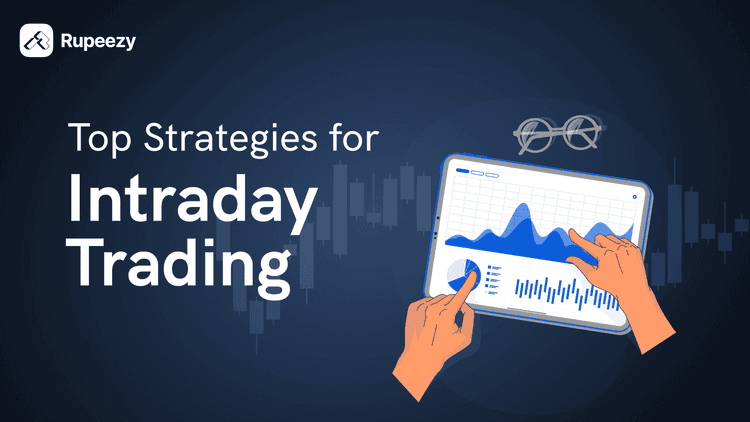Different Types of Margin Trading in the Indian Stock Market


00:00 / 00:00
In this blog we will discuss different types of margins stipulated by the regulator for stock market investors and traders.
Before we delve into types of margins, let us first understand why margin in stock markets is required. When an investor places a trade, they are supposed to bring in the requisite funds for settlement which needs to be paid to exchange by the broker.
There may be a scenario where investor does not have funds to settle the trade. To safeguard this situation, SEBI has mandated stringent margin requirements for different segments and types of trades.
For example, if you buy shares worth Rs 2,00,000 but the value of shares come down to Rs 1,80,000 on the same day.
You are supposed to have Ra 2,00,000 in your account to settle the trade so that the money can be paid to buyer. But, if you do not bring the money, the square off will be at a loss. To cover the loss, the broker charges a margin computed basis volatility in the stock.
Concept of margin in stock market is similar to borrower down payment used in lending where lenders pay up to 85% to 90% of the loan and the borrower brings the remaining portion as borrower’s stake in the transaction.
Margin is a risk hedging mechanism enforced by stock market regulators and exchanges, considering the worst case scenario to calculate required margin.
What are the Different Types of Margins?
In the cash market, types of margins are:
VAR (Value At Risk) Margin
VAR is the simplest to understand. VAR margin is a statistical calculation that considers the worst possible loss scenario for a stock for a certain period, based on historical volatility of the scrip. VAR margin is collected upfront to cover the largest possible loss that can hit the stock during market volatility.
Extreme Loss Margin
The second type of margin covers any probability of loss beyond the VAR method prediction. The ELM is calculated on the basis of stock volatility in the past six months.
ELM is fixed at the beginning of the month and allocated in addition to VAR margin. ELM is charged as a fixed percentage of the transaction value. Both VAR and ELM margin are mandatory to be deposited as per SEBI norms.
Mark to Market Margin
MTM Margin considers the difference in a stock’s closing price and transaction price to cover the difference for all open positions at the end of the day.
It covers the risk of change in price of stock due to market volatility. MTM in the cash market covers risk in trades with margin facility.
When a trader buys stocks with funds on credit, broker needs to adjust the margin as per overall value of trade at close and a shortfall needs to be fulfilled as per MTM value.
Margin in F&O Segment
For both Futures & Options contracts, below margins are required:
- Initial Margin
- Exposure Margin
Additionally, Options Contracts require:
- Premium Margin
- Assignment Margin
Initial Margin
Initial Margin is computed on collection of futures & options positions. It is calculated using a standard software known as SPAN (Standard Portfolio Analysis of Risk) developed by CME (Chicago Mercantile Exchange) and employed extensively worldwide by leading exchanges.
How SPAN works is, it generates 16 different scenarios on the assuming different price and volatility values for the underlying security in the cash market.
The initial margin is calculated to cover the highest possible loss for each scenario and collected at the time of placing the order. SPAN is computed six times a day. High volatility means high SPAN margin.
Exposure Margin
Exposure margin is collected in addition to SPAN Margin. The exposure margin is charged as a percentage of a share’s face value. For index futures and index option sell positions is 3% of the notional value.
For stocks futures and sell positions in options, the exposure margin is 5% of the notional value or 1.5 standard deviation of the logarithmic returns of the underlying security in cash market over the last 6 months period.
Premium Margin
Options Buyers pay a premium margin equal to value of premium multiplied by the number of options purchased. The premium covers maximum possible loss on the options buy position. It is collected at the time of the trade.
Assignment Margin
It is collected from Options contract seller on assignment, charged on the net exercise settlement value due from the option writer.
ELM (Extreme Loss Margin)
Similar to cash segment, derivatives contracts have ELM requirements.
For index derivatives, ELM is calculated at 2% of notional value.
For stock derivatives, ELM is computed at 3.5% of notional value.
MTM Margin
MTM Margin is calculated by marking each transaction in a security to its closing price. It is collected at the start of trading on the second day in case of positional trading.
At the end of each day the difference in cost of security vs closing price is taken to compute MTM Loss on the position. In future contracts, the price fluctuates frequently and can end up in upsides or losses due to volatility.
MTM margin levels the losses on daily basis, in addition to SPAN and Exposure Margin. Concept of MTM margin is similar as cash market Intraday trading, only difference is in time period.
Delivery Margin
Delivery margin is required to be blocked for all equity derivative contract outstanding positions, four days prior to contract expiry. The additional delivery margin blocked is released on its own after the settlement is over.
Peak Margin
Peak Margin requirement was introduced in 2020 and has been applicable since Sept 2021. As per the guideline, a trader must maintain 100% of peak margin (VAR + ELM) before the trade.
The peak margin reporting considers the highest margin out of four position snapshots sent by exchange during the day.
There is a penalty levied for any shortfall in peak margin requirement.
FAQs
What is margin classification?
Different types of margins in the stock market are broadly classified according to segments: Cash Segment and Derivatives segment.
How many types of margins are there?
There are different types of margins classified as VAR Margin, Extreme Loss Margin and Marked To Market Margin in the cash segment.
In Derivatives segment, there is initial margin, exposure margin, premium margin, assignment margin, Extreme Loss Margin, MTM Margin and Delivery Margin.
The content on this blog is for educational purposes only and should not be considered investment advice. While we strive for accuracy, some information may contain errors or delays in updates.
Mentions of stocks or investment products are solely for informational purposes and do not constitute recommendations. Investors should conduct their own research before making any decisions.
Investing in financial markets are subject to market risks, and past performance does not guarantee future results. It is advisable to consult a qualified financial professional, review official documents, and verify information independently before making investment decisions.
Open Rupeezy account now. It is free and 100% secure.
Start Stock InvestmentAll Category









